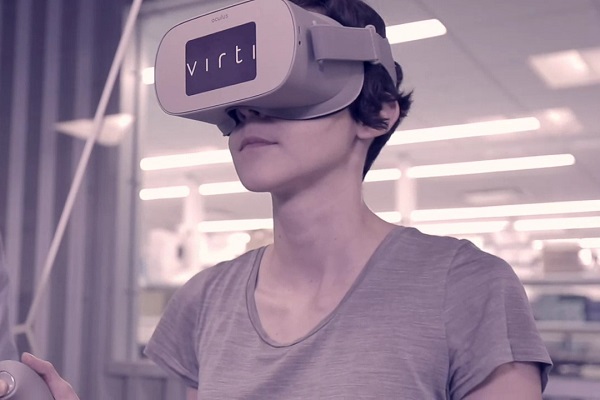Virti’s Virtual Patients Are Training Doctors to Communicate
Virtual humans developed by tech startup Virti are teaching doctors real communication skills. The virtual patients are generated with a combination of computer graphics and trained AI and can fill a frequently cited gap in medical professional skillsets. Virti is opening another vista for the technology even as virtual humans rapidly proliferate across industries.
Virtual Doctor’s Visit
“There’s not a lot of standardization for soft skills, but making decisions and leadership need training, especially under pressure,” Virti CEO Alex Young told Voicebot in an interview. “Most complaints that can lead to litigation can be traced to poor communication, especially in volatile environments. Say someone is diagnosed with an end-stage condition, your communication skills really need to be on point and, unless you’re in something like an oncology center, breaking bad news isn’t something you do frequently. Unless you do something regularly, you might not be so adept as if you’re doing it every day. My ethos was, how can we make non-technical skills training repeatable and scalable. That was our big goal, to set a new standard for training people.”
The virtual humans created by Virti can interact on mobile devices, desktop computers, or virtual reality headsets. The interface adjusts accordingly, with video conferences on computers and full immersion in a virtual hospital possible with the VR headset. Each interaction is scored on elements like how they talk to the AI, questions they ask, and even how long they talk to the patient. What the doctor says and the manner they speak affects how the AI responds, altering its responses for better or worse. The results can then theoretically be applied by the doctor when talking to real patients.”
“On the machine learning side, there is lots of natural language processing for recording and analyzing text pulled into the system,” Young said. “We segment each area of conversation in a scenario to look at what people are saying, but also how they are delivering it and their actual steps in how they are presenting it to a patient or a teammate.”
Traditionally, this kind of training is done with actors. Third-party observers then provide feedback, but that method can be prone to bias, Young said. Virti can augment that process by 3D-scanning one of those actors as someone the doctor practices with.
“That’s where it gets really exciting,” Young said. “We can scan them into the system to practice with; then they could come in for real roleplay. We’re big advocates for training, period. One thing we think about is what’s appropriate to deliver through our system. We’re not out to replace face-to-face training by any means.”
Accelerating AI
Training doctors are just one of the business services Young envisions for Virti. He suggested salesperson and other business skills training are in the cards for Virti and any potential rivals. Virtual humans can theoretically be used for anything the AI and visual animation can accommodate. Consumer-facing examples are popping up all of the time. Just this week, Nestle Toll House launched Ruth, a virtual human “cookie coach.” Platforms like MetaHuman Creator are getting attention for making ultrarealistic appearances for virtual humans, and startups like CoCo Hub are creating virtual influencers capable of writing pop songs.
Young points to a combination of circumstances for the remarkable pace of virtual human tech adoption. Like so many other services that can be provided remotely, Virti saw a spike of interest in the wake of the COVID-19 pandemic now counts about 20 hospitals and medical facilities as clients.
“Even back in the end of 2019, we were seeing an acceleration of adoption,” Young said. “The pandemic forced people to really think about their well-being. We grew a little under 1,000% just in 2020.”
Follow @voicebotai Follow @erichschwartz
How CoCoHub Shepherds Custom Virtual Humans to Your Zoom Conference
New Portable Smart Speaker Helps Oncologists Treat Cancer Patients









